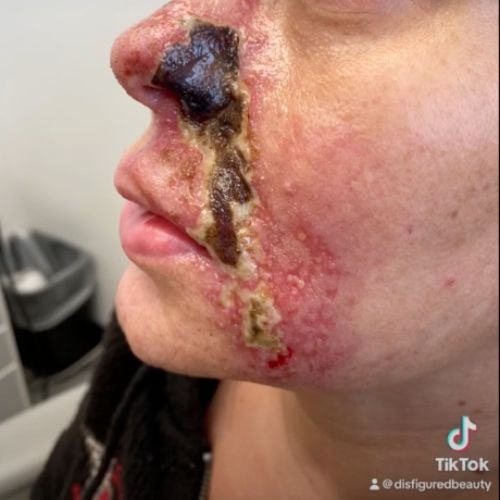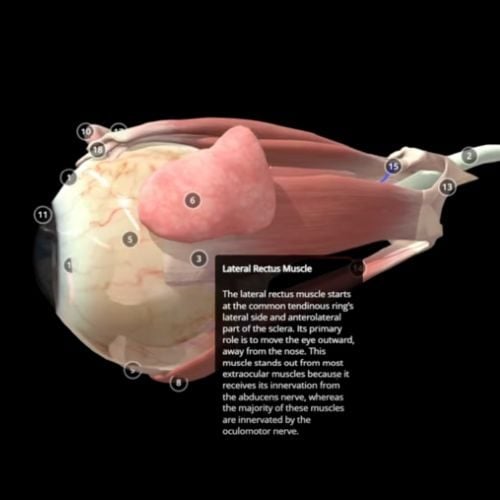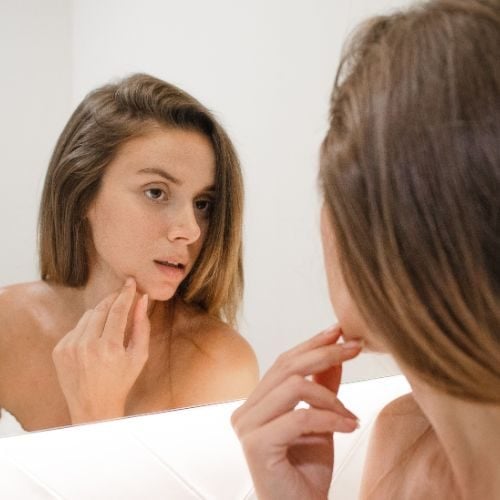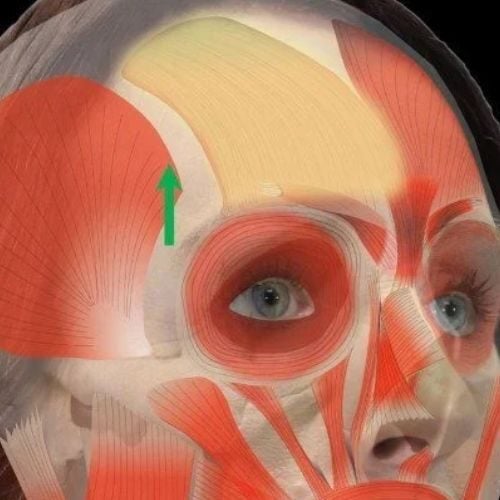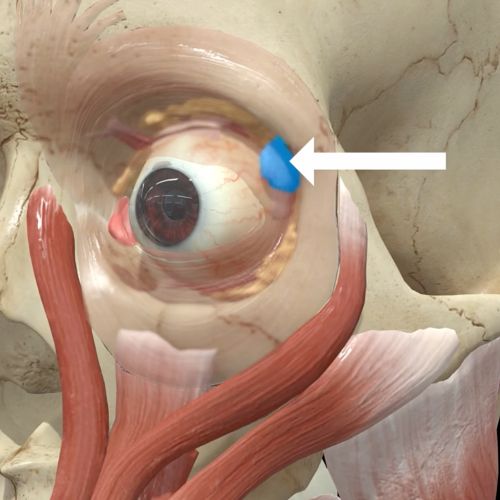- Mail us: support@drtimpearce.com
Why 80% of visible ageing is due to ligaments and fat pads
You may be interested
 Dr Tim Pearce
Dr Tim Pearce

In two previous blogs, Dr Tim Pearce explored why superficial fat pads are important in facial aesthetics, how to discuss them with your patients and develop your treatment design, going on to look at the fat pad anatomy for the upper, middle and lower face deep fat pads.
In this blog, Dr Tim explains how they are all tied together, mechanically, using the ligaments, and why this is responsible for almost all the visible ageing we see in the face.
You can use the knowledge of fat pad and ligament anatomy during your consultation to predict the amount of dermal filler required to achieve patient goals. Remember, discussing anatomy during the consultation can build trust and help your patients to understand their ageing so you can both get better results from the treatment plan.
Do you feel anxious about causing complications? Many clinicians feel so overwhelmed with the thought of causing a vascular occlusion that it stops them growing their aesthetics business. Dr Tim is currently hosting a webinar series to help you overcome your fear of complications so that you can uplevel your knowledge, and increase your CPD-certified learning to build a successful aesthetics business. Sign up here >>
What is the relationship between the ligaments and the fat pads?
Dr Tim makes the claim that 80% of facial ageing, in terms of what is visible, is the changing relationship between the fat pads and ligaments. He explains further that superficial fat pads, deep fat pads, and ligaments control the surface of the skin, the size and proportions of the face; thus, when a person looks five or ten years older, he believes that the fat pads and their relationship with the ligaments are the primary cause.
The way the ligaments are connected to the bone is fundamental in how and why the face changes shape as you get older, revealing some of underlying anatomy. If we consider lines and shadows, the shadows are usually the ligaments, the bulges are the repositioning of the fat pads and present a visual cue to ageing. You also notice the surface of the skin, which is similarly important in terms of facial ageing, but it is one component, the top layer. If you can make the skin surface a little tighter, it will help to keep the fat pads in the right position. Ageing also increases the amount of pigmentation on the skin, perhaps causing uneven pigmentation, thus there are other factors that influence facial ageing, but Dr Tim thinks the overall shape of a face, and what defines a youthful face, is the physical manifestation of the fat pads and ligaments, alongside the underlying muscles and bone.
What are ligaments?
A ligament attaches the surface of the skin to a deep underlying structure, the deep fascia, which can be just above the bone or in some cases on a muscle. It is what holds the skin in place from the foundational structure.
Dr Tim likes to visual ligaments as trees. They have their ‘roots’ in a solid structure – either the deep fascia or periosteum – and their ‘trunk’ passes up through the deep fat layers until it crosses the SMAS (Superficial Muscularaponeurotic System). Above the SMAS is the retinacular cutis with the superficial fat and this is where the ‘branches and leaves’ integrate, culminating in the top dermal layer.
The general structure of a ligament is therefore deep and solid, at its roots, with a thin segment that branches out for stability in the top layer, thanks to all the layers being connected through the ligament. When you understand and visualise the ligaments, Dr Tim believes that you will understand more about the role that volume has in supporting these structures.
What is volume in facial tissue?
 The deep and superficial fat pads encase the ligament and provide support to the skin, thus there is a mechanical relationship between the fat pad and the ligament that is crucial in terms of lifting. Dr Tim illustrates this using a simple model to imagine the skin, ligaments, and fat working together.
The deep and superficial fat pads encase the ligament and provide support to the skin, thus there is a mechanical relationship between the fat pad and the ligament that is crucial in terms of lifting. Dr Tim illustrates this using a simple model to imagine the skin, ligaments, and fat working together.
The small sticks represent the ligaments, running from the periosteum, in the deep layer and through the deep fat compartment. They reach the next layer, the SMAS, and the superficial fat layer with the ligaments continuing to run through the structure, and in some cases inserting into the dermis, the top layer.
The skin, as shown in the model, has two fat compartments. With this illustration, there is a lot of movement which would signify the skin in an older person, where there is very little support, or volume. If we place volume (fat) underneath, represented with balloons, we create a much more stable structure that does not want to lean as significantly because the fat pads support the tissue.
 With ageing, as we decrease the volume of these fat pads – letting air out of the balloons – the deflation causes a natural descent of the structure. In the model, the structure falls to one side, without intervention.
With ageing, as we decrease the volume of these fat pads – letting air out of the balloons – the deflation causes a natural descent of the structure. In the model, the structure falls to one side, without intervention.
When inflated – when the fat pads are voluminous – the ligaments are firmly attached and in the natural position, pulling upwards to an upright stance.
Applying this to the skin, it is also pulled into place, as volume causes a natural pulling of tissue upwards, thus volume and lifting are linked through the ligaments.
As aesthetic clinicians, we can explain to our patients why volume and lifting are directly connected, and you will see it for yourself when performing a cheek treatment – as you replace volume, the jowls will improve, hence dermal fillers do have a lifting capability by replacing lost volume within the ligaments.
How does volume loss indicate facial ageing?
Dr Tim believes that when we are viewing an ageing face, it is this deflation that we see. It causes tissue descent, but the ligaments do not let go, they are still attached to the skin. As the tissue descends, through volume loss, you see the shadows caused by the ligaments holding onto the skin.
The three primary observations of this kind are the tear trough, nasolabial folds, and the melolabial folds (marionette lines), because the tissue above is falling where there is not an attachment, yet where there is an attachment, it is holding on and creating the shadow.
Where are the facial ligaments?
The location of ligaments in the face are driven by its functions. The first function of the face is to eat, hence the muscles of mastication run from the masseter all the way to the zygoma, and into the superficial temporalis muscle, plus many other muscles involved with chewing. These create a strong, rigid structure at the side of the face required for stable mastication. Hence, the lateral part of the face has many more skin attachments, and these ligaments are much stronger, with much less movement than in the middle part of your face.
The function of the middle part of the face is communication and a sensory component for expression, which requires a lot more movement. This manifests in more places where there is movement facilitated by areas where the skin is not attached to the bone, but conversely, they are also the same areas that move as you get older and cause the signs of ageing.
Dr Tim concludes that it is vital that aesthetic clinicians do not get too focused on individual ligaments but picture the distribution of the ligaments. Most of the ligaments fall on an angle between the lateral and the anterior face. The change in the function of the face is overlaid by the anatomy, thus as you move from being focused on communication to focusing more on mastication, this is where the line of ligaments form a ‘boundary’.
 The line of ligaments that holds the anterior face in place starts with the superior temporal septum, then the orbicularis oculi retaining ligament, and in particular the lateral orbital thickening which falls on this line, moving downwards to the zygomatic cutaneous ligament, by far the strongest aspect of that is right on the angle of the zygoma on this line. Underneath, along the masseter, is the upper masseteric and masseteric cutaneous ligaments and the mandibular septum beneath, onwards, finally, meeting with the mandibular cutaneous ligament.
The line of ligaments that holds the anterior face in place starts with the superior temporal septum, then the orbicularis oculi retaining ligament, and in particular the lateral orbital thickening which falls on this line, moving downwards to the zygomatic cutaneous ligament, by far the strongest aspect of that is right on the angle of the zygoma on this line. Underneath, along the masseter, is the upper masseteric and masseteric cutaneous ligaments and the mandibular septum beneath, onwards, finally, meeting with the mandibular cutaneous ligament.
Why not get your hands on a great deep fat pads and ligaments poster as part of Dr Tim Pearce’s collection of individual artistic anatomy posters for your clinic. These are great to use during a consultation with your patients.
You can find Dr Tim Pearce on Instagram if you have any questions or comments about facial anatomy, including fat pads and ligaments.
Is your worst nightmare causing a VO?
If you want to be a great injector then you need to get over your fear of complications. Register here for the next webinar to help you overcome your complications anxiety >>
Subscribe to our YouTube channel for really useful regular tips and advice. ![]()
Filler Complications eLearning Courses
If you want to increase your confidence by learning how to handle complications, Dr Tim Pearce offers two comprehensive courses that are highly rated by our delegates:
Both give CPD and certificates on completion.
In addition, browse our FREE downloadable resources on complications.
Dr Tim Pearce eLearning
Dr Tim Pearce MBChB BSc (Hons) MRCGP founded his eLearning concept in 2016 in order to provide readily accessible BOTOX® and dermal filler online courses for fellow Medical Aesthetics practitioners. His objective was to raise standards within the industry – a principle which remains just as relevant today.
Our exclusive video-led courses are designed to build confidence, knowledge and technique at every stage, working from foundation level to advanced treatments and management of complications.
Thousands of delegates have benefited from the courses and we’re highly rated on Trustpilot. For more information or to discuss which course is right for you, please get in touch with our friendly team.
Related Articles
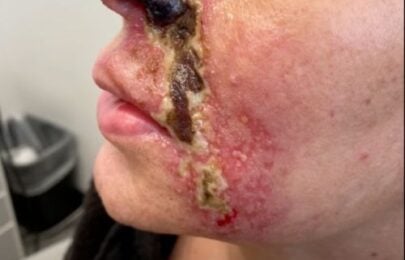 Bestseller
Bestseller
Vascular Occlusion and Necrosis Prevention: The Ultimate Safety System for Aesthetic Injectors
October 21, 2025
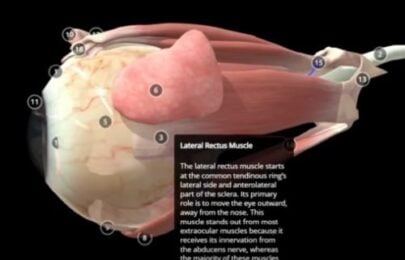 Bestseller
Bestseller
Preventing Double Vision from Botox: Mastering the Lateral Rectus Safety Zone
October 16, 2025
 Bestseller
Bestseller
Body Dysmorphic Disorder in Aesthetic Practice: Ethics, Risks, and Recognition
October 7, 2025

